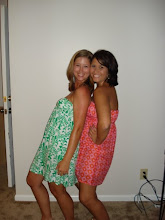
The University of North Carolina at Chapel Hill is known for its academic prestige, its athletic talent, and its scenic beauty. As a student of the university and as a resident of the town of Chapel Hill I was surprised to learn its long standing history.
Down a gravel driveway at the end of
Peter Droomgoole was a former student at the university who was originally from
Peter was completely consumed by Fanny. Though Fanny was madly in love with Peter, it didn’t stop other suitors from pursuing her. A friend of Peter soon became a foe as he tried to steal Miss Fanny’s heart. Peter enraged with jealously tracked down his rival and confronted him for trying to steal away his lover.

Peter and his former friend agreed to meet for a duel at the “special spot” where Peter and Fanny often met. The legend says that Peter and his rival backed away from each other for ten paces in true dueling fashion. After a few minutes the duel was over and Peter lay wounded on the ground. Peter's opponent carried Peter's hurt body to a rock. As Peter lay dying his foe dug a shallow grave. Peter bleed to death upon that rock.
Miss Fanny searched all over campus for Peter and when her search turned up empty she went
to the cliff area to wait for her lover.
The story says that Fanny lay weeping for Peter on the rock where Peter was laid to die. Peter's body was never recovered and his grace remains empty. Legend has it that Fanny would often see a tall figure in the woods walking towards her. After Peter’s disappearance Fanny died from a broken heart in the sam e place where Peter died.
e place where Peter died.

The haunting of Gimghoul says that in the wooded area behind the Gimghoul castle Fanny is searching for Peter so they can be together again. As in Fanny's story Peter ghost is searching for her. The legend says that the two lovers have been seen walking hand in hand through the woods. The rock where Peter is said to have died is still to this day red from his blood.
My intentions with the visual narrative project were to tell the story of the haunting of Gimghoul in







